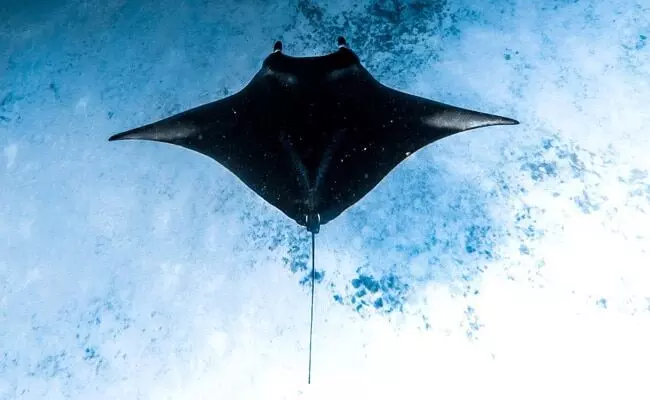
Scientists astounded by discovery of giant manta ray population near Ecuador
text_fieldsAccording to a report in the Marine Ecology Progress Series, researchers have discovered a sizable population of manta rays off the coast of Ecuador. More than 22,000 manta rays are present in the group, which is more than ten times the population estimates in other areas. In a time when climate change and human activity are driving an increasing number of animals' habitats to become more and more fragmented, the discovery has offered ecologists and ocean scientists new hope. They now want to research the ideal surroundings for the fish to flourish.
"It's clear that something different is happening here. This is a rare story of ocean optimism. In other regions, we typically have population estimates of 1,000 to 2,000 animals, which makes this species very vulnerable," Joshua Stewart, a quantitative ecologist from Oregon State University and one of the authors of the discovery's research paper was quoted as saying by Science Alert.
Mr Stewart added that manta rays are "sensitive to environmental disruptions" and that a warming climate is expected to have an effect on them, NDTV reported.
Like fingerprints, the distinctive spot pattern on each manta ray's belly helps scientists identify them. They can also maintain track of the current stock of fish over time with its assistance.
The biggest rays in the world are mantas. The sea creatures can be found worldwide in tropical, subtropical, and temperate ocean waters claim National Geographic.
The International Union for Conservation of Nature (IUCN) added manta rays to its endangered species list once more in 2019. Commercial fishing has been highlighted as the biggest threat to the species on the Red List of Threatened Species.
The name "Manta" (which translates to "blanket" or "cloak") refers to the appearance of the animal, which has a big, flat, diamond-shaped body and triangular pectoral fins. The two horn-shaped fins that protrude from the front of manta rays' heads have earned them the moniker "devil fish."


















